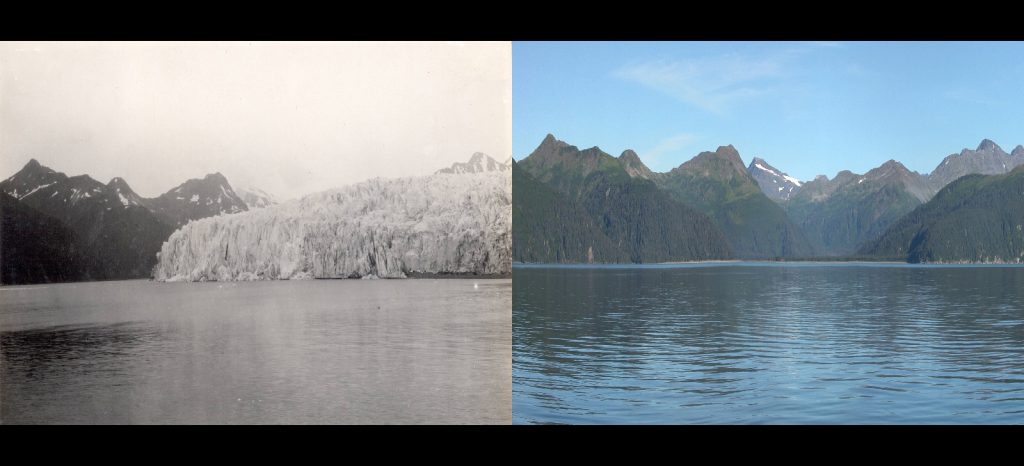Introduction
Environmental History is about looking at the past as if the environment matters. American History is about looking at the past of not only the United States, but of both the American continents. This wider view is especially important when we realize that people occupied the Americas for over 15,000 years before Europeans arrived and that when they came to the Americas, Europeans focused their interest for centuries on areas that are not part of the current United States. As we get closer to the present, we will focus more on the U.S., but we’ll try to remind ourselves from time to time that we’re not the only nation in the Americas by considering how other nations have experienced and affected the environment.
Not that long ago the world seemed so big and human actions seemed comparatively so small that it was easy to ignore our effect on the world around us. Today we understand that people have a big impact on our surroundings. And we’re becoming aware that our environment has played an important part in our individual lives and in the growth of our cultures. Instead of being just a neutral backdrop, the environment is now recognized as a powerful shaper of human choices. That is, history.

By the environment, I mean everything around us. The natural world, but also the manmade world. Often it’s difficult to draw a distinct line between those two. We intuitively feel that tree-lined suburbs are more natural than the city and that the wilderness is even more pristine. But if we look closer we often find the suburban trees were part of a developer’s design, and even wilderness areas are special human-made places that have been deliberately protected or even rehabilitated so they resemble our idea of pristine nature.
The environment is also more than just the green part of the world. Even the most sophisticated urbanite depends for her food, water, and energy on elements of a much wider environment than she may be aware of. Nor are we talking only about environmentalists. The most jaded materialist depends on the environment just as much as the most dewy-eyed idealist.
If environment is a surprisingly complicated word, so is history. Most Americans live our lives within a set of stories that describe who we are and who we think we ought to be. These are the civics and social studies lessons we are all so familiar with. Historians recognize that many of these stories are not as true as we’d like to think. A lot of our histories have changed quite a bit over time, as have our reasons for telling them. History isn’t just data about the past, it’s the stories we tell about the past.
So where does that leave us? American Environmental History, for the purposes of this book, means looking at our past with special attention to how our surroundings influenced our opportunities, our choices, and our actions; and to how our actions reshaped our surroundings.

There are two basic elements of looking at a past that includes the environment. First, we pay close attention to the physical world. For example, the shape of the American continents and the fact that they are connected to each other but cut off from the rest of the world has influenced American cultures from their prehistoric beginnings to the present. Landforms, waterways, natural resources, and climate have all been important factors in how our society has developed and how it continues to change. Second, we remember that how we think about the environment, like how we think about the past, has changed over time; and that those changes affect our current choices and actions. You don’t have to dig too deeply into current headlines to find debates raging over coal mining, oil pipelines, depleted fisheries, mass extinctions, and climate change. Our beliefs about the world around us and our role in it are important elements of the competing positions taken by advocates on either side of these important issues.
Our goal is to deal with both events and ideas. But realistically, this is a survey of American Environmental History stretching from prehistory to the present. We’re going to spend most of our time on events, especially because the environmental elements of many key events in American History are not well understood. Too often our stories about America’s past devote all their attention to political debates and to the ideologies of elite leaders or philosophies of founding fathers, and these tales are told against a neutral background that isn’t part of the story at all. The main goal of this text is to show that it’s really not possible to understand our past while ignoring the environment.
In a sense, that simple goal is also one of the ways this American Environmental History text differs from the academic field. When historians study Environmental History, we typically spend a lot of our time drilling into the details and rarely step back to talk about the big picture. As a result, there are plenty of books available about particular issues such as the Dust Bowl, Colonial America, Agriculture, or our changing perceptions of Wilderness. I assign chapters from some of these texts to my students. But we never had a textbook for my college course, because there wasn’t a survey text that covered the whole, big picture.
Until now. This book is based on the content of the course I taught for several years at the University of Massachusetts in Amherst and currently teach at Bemidji State University. It’s designed to give you an overview of American Environmental History and includes suggestions for further reading and chapter supplements that discuss some of those detailed studies I mentioned. There’s a lot of material to cover. I’ve tried to arrange it so it’s both concise and comprehensive. So welcome and let’s get started!
Media Attributions
- Thomas_Moran_-_Grand_Canyon_of_the_Yellowstone_-_Smithsonian is licensed under a Public Domain license
- McCarty1909-2004_USGS1 is licensed under a Public Domain license

